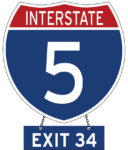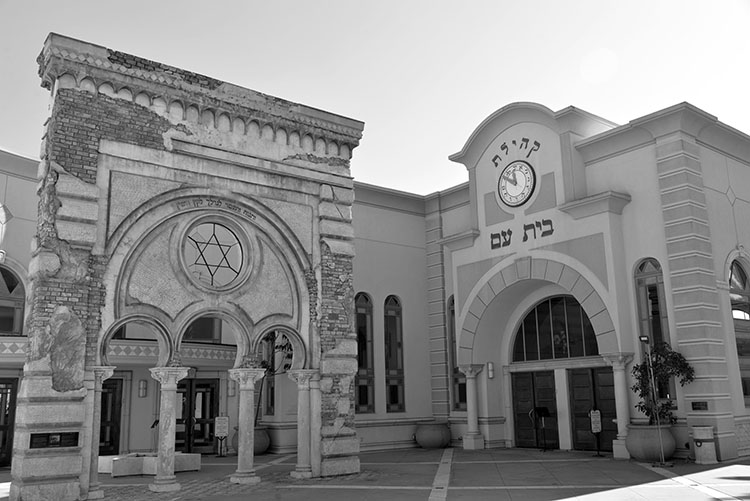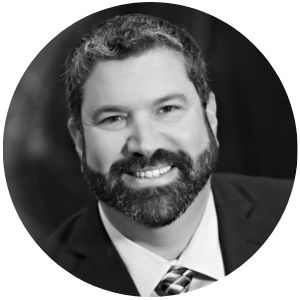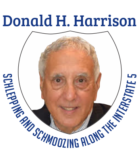 Editor’s Note: This is the 28th Chapter in Volume 2 of Editor Emeritus Donald H. Harrison’s 2022 trilogy, “Schlepping and Schmoozing Along the Interstate 5.” All three books as well as others written by Harrison may be purchased from Amazon.com.
Editor’s Note: This is the 28th Chapter in Volume 2 of Editor Emeritus Donald H. Harrison’s 2022 trilogy, “Schlepping and Schmoozing Along the Interstate 5.” All three books as well as others written by Harrison may be purchased from Amazon.com.
Schlepping and Schmoozing Along the Interstate 5, Exit 34 (Del Mar Heights Road): Congregation Beth Am
From the northbound Interstate 5 take the Del Mar Heights Road exit and turn right (east) and proceed to Congregation Beth Am at 5050 Del Mar Heights Road.


 While studying at the Jewish Theological Seminary (JTS) in New York City, Rabbi David Kornberg had difficulty deciding in which career direction he thought he should go. As one who always enjoyed studying the Talmud, he thought he might want to earn a doctorate in Talmudic studies. On the other hand, he was drawn to the pulpit rabbinate.
While studying at the Jewish Theological Seminary (JTS) in New York City, Rabbi David Kornberg had difficulty deciding in which career direction he thought he should go. As one who always enjoyed studying the Talmud, he thought he might want to earn a doctorate in Talmudic studies. On the other hand, he was drawn to the pulpit rabbinate.
Today, he is the senior rabbi at Congregation Beth Am (House of the People), a Conservative synagogue. He also teaches a class there on Talmud for adults as well as a class in Basic Judaism for people weighing possible conversion to Judaism. So, his career is a balance of two passions – Judaic studies and the pulpit rabbinate.
A third passion—chaplaincy—also was incorporated into his career.
Prior to being hired in 1999 as an assistant rabbi at Beth Am, Kornberg served as the chaplain at the Jewish Federation of Middlesex County, New Jersey, where he visited gravely ill people, officiated at funerals, and counseled grieving family members, among other responsibilities.
Kornberg had a year-long residency in chaplaincy at Robert Wood Johnson Hospital in New Brunswick, New Jersey. “What I learned at that time is that you can call it a ‘rabbinate of presence,’” he told me. “At times, it is not about what you say, it is just about being there. That has become an important part of my rabbinate. There is nothing that you can say that is going to make it better, or fix it, but you can at least stand there with the person, be there with the person, and represent.”
“Being a chaplain is about listening, he added. “It is about hearing what their needs are and trying to help them find the answers that they are looking for.”
Asked how he answers distraught family members who want to know why bad things happen, he responded, “Sometimes there isn’t an answer to our questions, but you still have to find a way through it to the other side, and you do that by walking with other people, by understanding that even in our hardest times when we are angry with God, God is still there. I teach in my Basic Judaism class that God is a relationship and just like any relationship, sometimes we have our ups and sometimes we have our downs. Sometimes we are even angry at the person but if we have a good relationship with that person, then it will see us through. That relationship anchors us and helps us get through those hard times. The same is true with God.”
Chaplaincy, Judaic studies, and sermonizing in the pulpit are all parts of being a rabbi. It’s all about balance, he emphasized.
Kornberg said that balance is what we Jews need to seek in our discussions of hot-topic issues. He decries political or religious debates in which advocates are intolerant of opposing points of view. Historically, Judaism has been more accepting of diverse viewpoints, as in Talmudic discussions about the meaning of different Torah passages. Modern-day Jews need to recognize “as it says in the Talmud, that there is worth in both sides of the conversation. It doesn’t always mean that you have to agree with it, but that there is value in that. To me, that is something our community has lost. We are out of balance, and we need to find a way to get back into balance.”
His grandfather, Anton Roland, was an early teacher of his. A partisan who fought guerrilla warfare against the Nazis in Hungary, Roland was among those Survivors who pulled away from religion feeling that if there were a God, He would not have allowed the Holocaust to happen. Roland nevertheless enjoyed Jewish discussions with young Kornberg. “He was the one who made sure that I had a Jewish education,” Kornberg recalled. “Even when I became a rabbi, he was somebody, though completely nonreligious at the time, with whom I could discuss Talmud because he grew up with it in Hungary. He studied it. He straddled both of those worlds. He really helped me come up with my mantra: “Balance.”
“The way of my rabbinate and my personal life is living a life of balance,” Kornberg continued. “What I have been able to do and what I try to do is bring [the religious and secular] worlds together with a sense of balance; you don’t have to live in one or the other. You can have a rich religious Jewish life and still live in the secular ‘real world’ so to speak. My personal Jewish journey and my rabbinate are about living a life of balance.”
Through ninth grade, Kornberg attended the Abraham Joshua Heschel Day School in Los Angeles which he said was “much like the San Diego Jewish Academy.” The Los Angeles school, which his family helped to found, was not affiliated with any single Jewish denomination. Thereafter, he attended Birmingham High School in Van Nuys for 10th through 12th grade, then briefly became a pre-med student at UC San Diego. Attending Judaic Studies classes under such professors as Richard Elliott Friedman, David Noel Freedman, and William Propp set his sights in a new direction.
The impact on Kornberg of Prof. Richard Elliot Friedman, author of Who Wrote the Bible, was profound. “It was the first time I was exposed to non-religious viewpoints on Judaism – the documentary hypothesis and those sorts of things,” Kornberg recounted. “I had always learned that Moses got the Torah from God at Sinai and passed it on to Joshua, and we had to memorize that Mishna (Oral Torah, not written down). All of a sudden, he is presenting the case that the Torah was written by humans and maybe not God. It actually put me into a big theological crisis, and I went into his office to speak with him. His personal growth was that he was going to be a rabbi and then decided to go into academics. We had some great conversations and he helped me to find a balance to some degree. I didn’t recognize it then, but I am recognizing it now: Find a balance of the religious world and the secular world. Both can speak to me as a human being and as a Jew.”
“It really opened my eyes to the study of Judaism,” Kornberg continued. “From that point on, I started taking more and more faith-based classes. I switched my major to Judaic Studies. That is what I graduated with from UC San Diego. It ultimately led me to go into Judaic Studies as a profession.”
After receiving his bachelor’s degree, he followed a Conservative Jewish curriculum by going to the University of Judaism in Los Angeles (now called American Jewish University), studying for a year in Jerusalem, and completing his studies for the rabbinate at the Jewish Theological Seminary (JTS) in New York City. While deciding, with some struggle, not to pursue a PhD in Talmudic Studies, he and his wife, Debbie, settled in New Jersey. Debbie had a master’s degree in Jewish education from JTS and began serving as an education director at a synagogue. Meanwhile, he decided to enroll in the chaplaincy program.
While Debbie was completing her contract at the New Jersey synagogue, Kornberg applied to become an assistant rabbi at Congregation Beth Am, which was growing quickly under Rabbi Arthur Zuckerman, widely known as “Rabbi Zucky.”
“This was my first pulpit, so I watched what Rabbi Zuckerman did,” Kornberg recalled. “He was a master of being a rabbi of presence. He was there for people; he was all about that. I learned a lot from Rabbi Zuckerman. He always had a smile. He was always kind. He knew how to relate to kids. He had a puppet named Booky. So, it was Zucky and Booky. At the preschool, he’d bring out the puppet and he had that magic with kids.”
Kornberg’s apprenticeship lasted five years, starting as an assistant rabbi and going on to become the associate rabbi. While he was negotiating a five-year renewal as associate rabbi, Rabbi Zuckerman announced in 2004 that he was going to retire. “When we found that out, we switched the contract,” Kornberg said. “The board made a decision they wanted me to sign on as senior rabbi.”
Today, Kornberg is building on one of Beth Am’s traditions that stretched back to its early days as a congregation in a former Goodyear tire store in Solana Beach. At that time, Rabbi Wayne Dosick—who today is the leader of the Elijah Minyan in Carlsbad –was Beth Am’s founding spiritual leader. In 1982, he learned that new congregations could obtain Torahs that had been seized by the Nazis for display in a proposed museum celebrating the extinction of the Jewish people. The Torahs were transferred from Prague, Czechoslovakia, to the Westminster Synagogue in London for distribution to Jewish congregations throughout the world. Lynn Schenk, whom we met in a chapter in Volume I about the Port Commission, and her husband, Hugh Friedman, promptly agreed to purchase one of those Torahs for the congregation in honor of her parents, Sidney and Elsa Schenk, who were Holocaust survivors.
Once obtained, the Holocaust Torah from Roudnice, Czechoslovakia, was dressed in a black mantle with a yellow star. Rabbi Dosick had Beth Am’s bar/bat mitzvah students read from that Torah when they led services, symbolically linking their simchas (happy occasions) with those that children of Roudnice, Czechoslovakia, never had the chance to celebrate because they perished under Nazi rule.
Six years later, Carol Davidson Baird, then president of the San Diego Jewish Genealogical Society, visited Roudnice with her husband, Dr. Stephen Baird, and two sons. The synagogue was destroyed, but there remained a building by the cemetery where the Chevra Kadisha (Holy Society) washed and shrouded the bodies while reciting psalms for the deceased. Drawn to the building’s arched entrance embellished by a large Jewish star, she made some tracings and photographs of the structure. She framed and presented them to the congregation on Yom Kippur 1989 along with a shadow box containing wood and stone from the site.
Inspired by the photograph and Beth Am’s ceremonial attachment to its Roudnice Torah, architect Michael Witkin traveled to Roudnice, took architectural measurements, and made a mold. He was able to reproduce the façade of the Roudnice ceremonial hall as a free-standing Wall of Remembrance in the courtyard of the Carmel Valley site to which Beth Am relocated in 1999. Some of the ritual hall’s architectural features, such as its columns, were utilized in the design of Beth Am’s new synagogue building.
Rabbis Zuckerman and Kornberg continued the tradition of bnai mitzvah (children of the commandment) reading from the Torah in what has been designated as the “Remember Us Project.” Now, the congregation is planning to travel to Prague and Roudnice in 2023.
The idea behind the trip is to take Beth Am’s symbolic connection with the lost Jews of Roudnice a step further, Kornberg said. “The Nazis were unsuccessful in having the Torah not being used ever again, but they were successful in destroying the community of Roudnice. There is no Jewish community there. So, to take it back there is a statement that we are doing this in honor of that community that is no longer there and connecting to that. But it is also about balance because we are going to bring that Torah to Israel, and we are going to take the Torah on its own ‘March of the Living.” The Torah is there, representing Roudnice, but it also continues to represent our future.”
For two years as Beth Am’s only rabbi, Kornberg had to tend to the needs of 600 congregant families. “I was in a lot of places at once and very tired at the end of that,” he recalled. “What I needed to do was to keep our head above water and it didn’t allow me to vision or plan where I wanted to go until after Rabbi [Matthew] Earne got here.”
“We have always been a congregation that focuses on the kids,” Kornberg stated. “Rabbi Zuckerman said if we focus on the kids, parents will take care of us. Added to that, we also need to provide something for the adults. Judaism is a complex and sublime tradition. I see that in the conversion programs that I run and when we have adults learn about Judaism, the way that they connect. The ways that they relate to Judaism is so much deeper than those of us who have gone through it as children.”
“Even when Zucky was here, I always taught the adult classes and I continue to do so now; that is a priority of mine,” Kornberg commented during our February 2022 interview. “Rabbi Earne focuses on the Hebrew school; I focus on the adult learning that we do here. I have a class called beit midrash (roughly, house of biblical interpretation) because I love Talmud so much. It is Talmud study. It has been going on for 23 years.”
What about Talmud so resonates with him?
“It is the way my mind works,” he responded. “I love the back and forth. I loved symbolic logic in college when I took that. I loved geometry proofs. I enjoy that back-and-forth discussion, proving things, arguing things, and the Talmud is filled with that. But what it comes down to, back to my mantra, the Talmud is about balance. It is about not just having one opinion but having multiple opinions and then finding the one that works for now. And it is about maintaining those multiple opinions. Even though we go with the majority opinion, the minority opinion is a voice, and it is still there because it is important. And who knows, the Gemara (a synthesis of rabbinic thought) says, maybe in 1,000 years the situation may have changed, and the minority opinion is going to become the majority opinion. If we don’t keep it there, if we don’t honor that, it is gone. It goes back to that mantra about balance.”
*
Donald H. Harrison is editor emeritus of San Diego Jewish World. He may be contacted via donald.harrison@sdjewishworld.com